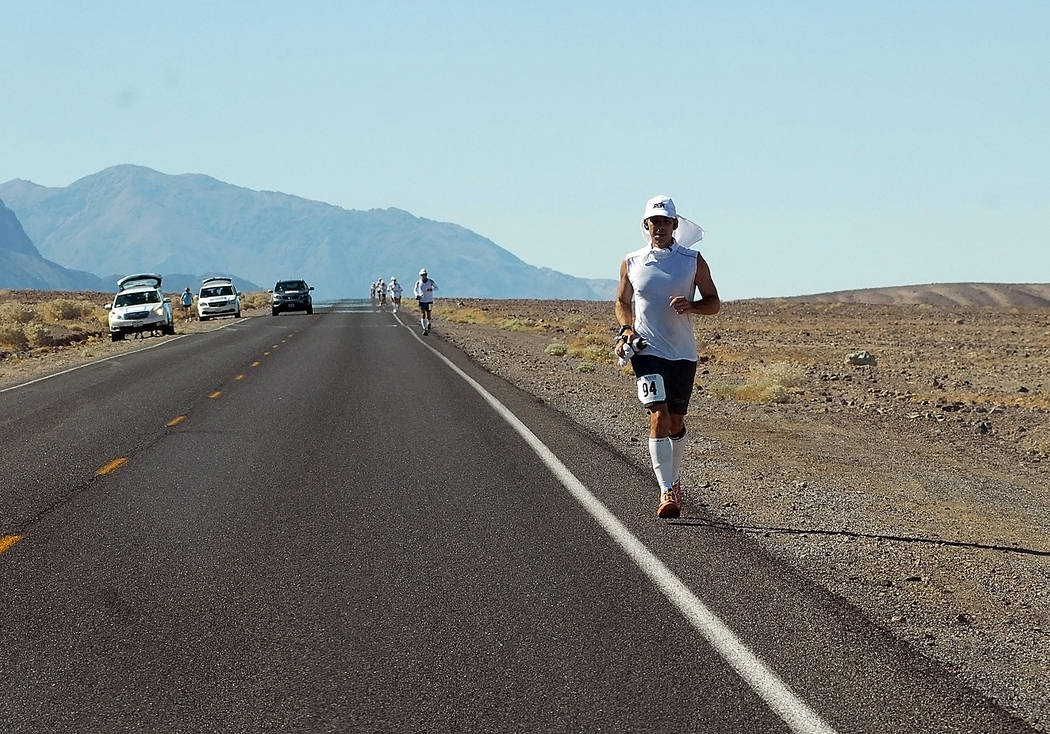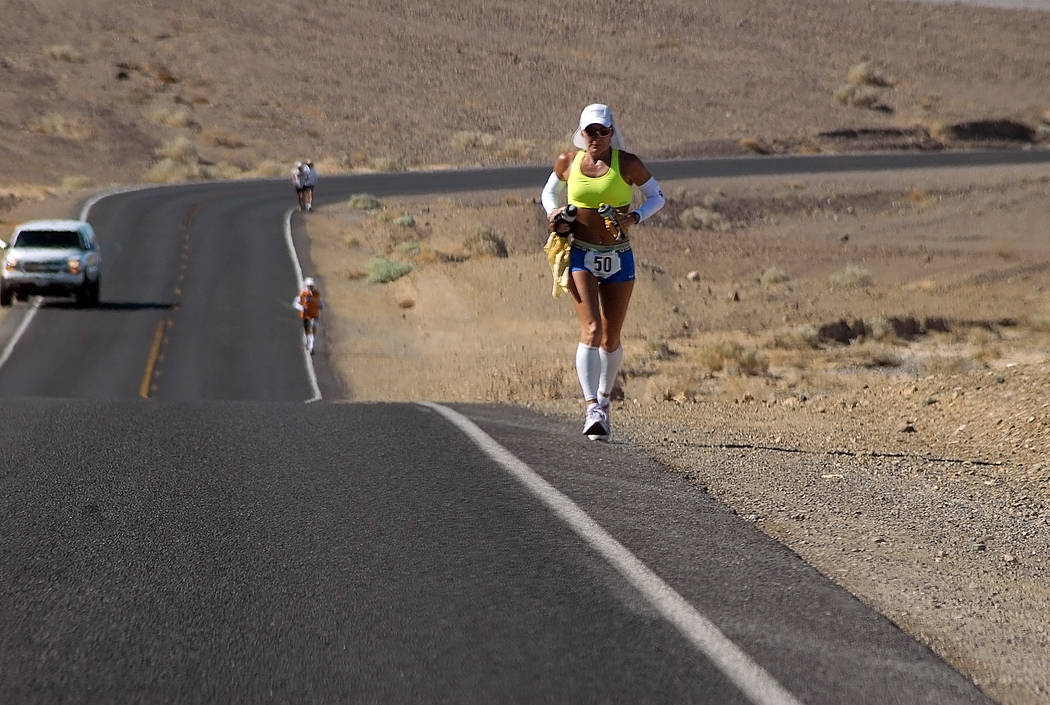Running in summer heat the smart way
The heat is back in full force in the desert where we live and people who live here have to deal with the heat. Those in town that run to stay in shape learn to either run early in the morning or learn to run in the heat.
When you want to learn how to train your body to run in the heat, talking to people who run in what is billed as the toughest footrace in the world makes sense. These runners run in the hottest place on Earth, Death Valley. Of course, running in Pahrump lately has been like running in Death Valley.
The experts speak
There is running in the heat and there is running in the Styr Labs 135 Badwater Ultramarathon race, which runs through Death Valley, where the temperatures for this week will rise up to 127 degrees. Not only do the athletes put up with the heat, but they run through it during the hottest time of the year, July. This year’s 135-mile race will be on July 10.
Top racers from the Styr Labs 135 ultramarathon race come from all over the United States and the world to run in this elite race.
How do these runners train for the hot, arid temperatures, especially if they come from cooler places?
Dave Krupski is from Cincinnati and has run in the race three times and said you can acclimate your body to the heat even if you don’t live in a place as hot as Death Valley. He did it by running during the heat of the day in Ohio.
For long-distance running in the heat, it is important for those coming to the desert, it is recommended you acclimate your body for a run in the heat.
“I have seen people pull tires and put a treadmill in the sauna,” he said, but really he doesn’t believe one has to go to such extremes as that.
Heat acclimation
“In running in the heat, running long distances will help,” Krupski said. “But you have to work hard.”
Krupski considers himself well versed in training your body to run in extreme heat. He said he has coached at least 50 runners to run Badwater and it is through coaching others in this race that he learned a lot about what it takes.
“When you coach others, you learn more about yourself,” Krupski said. “The reason being is you just don’t talk about your own experiences. You talk about others’ experiences, you get other people’s input and learn about others and their backgrounds. You then start to see patterns and the wide spectrum of experiences and what works.”
Krupski likes to keep his training for Badwater simple.
“To train for the heat of Death Valley, you run uphill during the heat of the day,” he said. “That will make you work harder. To train for Badwater I stayed in Ohio. I did all my training for the heat here. I tend to be more traditional. I run like a marathon runner and just extend the distance. Some people might think that you need to put a treadmill in a sauna and run in there to get ready for the heat. No, just do 30 to 40 miles on a treadmill.”
“I tend to be more traditional,” Krupski said. “ I run like a marathon runner and just extend the distance. Some people might think that you need to put a treadmill in a sauna and run in there. No, just do 30-40 miles on a treadmill.”
Krupski says for heat training you work the heart, therefore raising your internal temperature when you run. To get your body acclimated to the heat it is as simple as doing hills in the heat.
“Running fast uphill will help you to train for a Badwater-type run,” he says. “Anything that makes you run hard.”
Pete Kostelnick, two-time winner of the Badwater race, agrees. He lives in Missouri and just training in the normal heat of the summer in Missouri also works for him.
“It just takes me two to three weeks of running in the miserable heat of a hot, sticky Missouri summer,” he said. “It works out for me and so mileage and being physically fit is the best way to deal with the heat. I tried less mileage the first time I ran Badwater. I tried less mileage and more heat training that year and didn’t win.”
Since then, Kostelnick has smoothed out his training regimen. He now does 200 miles a week.
“I train now in just the heat of the day and believe in doing the mileage.”
Krupski said science backs him up. You don’t have to do strange workouts in 100-degree heat to get your body ready to run in extreme heat.
“I base my training on scientific data,” Krupski said. “I think it is a fallacy that we don’t have enough information on running in the heat. I think there is more than enough data and extensive knowledge for running in the heat and long-distance running. The data is there and there is enough people who have done this. People have done this since the 1980s.”
Pahrump long-distance runner chimes in
Trojans senior cross-country runner Bryce Odegard thinks the ultramarathon runners are a special breed. He agrees with some of the techniques they use.
“We also train for running in the heat,” Odegard said. “We spend about a week to two weeks acclimating our bodies to the heat. It’s a mental thing at first.”
Odegard said the cross-country team runs during the heat of the day to prepare their bodies for their three-mile high speed running they must endure in the late summer and early fall months.
He said even though they are not running over hundreds of miles in the heat, they still have watch what they drink and eat during a race and before.
“We have to be smart about what we eat before the run and races,” he said. “I watch my diet in the fall and eat carbohydrates and protein for energy.”
The Pahrump cross-country team is conditioning their bodies throughout the summer. Their season starts in mid-August.
Contact sports editor Vern Hee at vhee@pvtimes.com

















